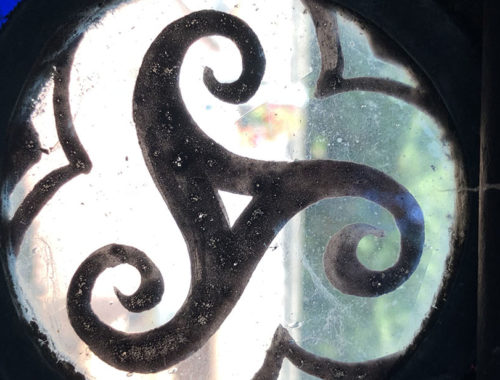What’s an Athame?
An athame is a knife used in Wiccan ritual. The name is usually pronounced “A-thuh-may” or “a-THAW-me,” but there’s ongoing squabbling about the “correct” way to say it, so bringing it at a Wiccan dinner party is a great way to start a lively argument if the conversation has gone stale. Traditionally the athame has a double-edged blade and a black handle—more like a dagger than a hunting or utility knife. However, modern athames are made of a wide variety of materials, and some have only a single-edge blade.
The athame is considered a masculine tool and is sometimes used in ritual to represent masculine energy, but both men and women use athames. The athame is associated with the element of fire or of air and with the south or the east, but like the pronunciation, both the element and cardinal point associations are sources of debate.
What’s an Athame For?
The athame is used to direct a Wiccan’s personal energy. It can be used to draw a ritual circle and open or release it after ritual, focus energy in a spell, or invoke elemental energy. And contrary to what Hollywood would have us believe—with its never-ending stream of films depicting menacing people in robes poised over the bodies of prostrate women, eager to plunge daggers into their hearts—the athame is never used to cut tangible objects, animals, or people. In fact, athames are often dull, since they’re not meant to cut objects, and also to help prevent us from stabbing each other accidentally during particularly active or crowded rituals.
The athame is usually considered a Wiccan’s most personal tool. Although Wiccans often share ritual tools with covenmates, in most cases, each person in the coven will have his or her own athame for use with the group and when working solo. By the way, never touch another person’s athame without permission. It’s considered rude.
Do I Have to Have an Athame to Be Wiccan?
In most cases, you don’t need to own or use an athame if you don’t want to. There are some Wiccan traditions that do require you to get one, but it’s also common in those traditions to teach students how to use the tool, so if you find yourself in that situation, it’s likely the training will help mitigate any discomfort you may have. If you’re not ready to commit to using a blade, just extend your index and middle finger together and focus your energy through them instead. We expect our students to be proficient in using these “built-in” athames long before they try out any cutlery, and it can be a good idea to do this instead of pulling out the blades when you’re in a crowded room or when kids are underfoot anyway.
What Should an Athame Be Made Of?
It’s fairly easy to find a more or less traditional athame with a metal (steel) blade and wood handle, but people make athames out of a lot of other materials, too. I’ve seen wood, copper, pewter, bronze, bone, and obsidian athames. Some groups avoid blades made with steel or iron or insist the blade be double-edged. Others have rules for the color of the handle or the blade length. (I was in a group once with someone whose athame was really more of a short sword. The owner had to be very conscious of the space around him to avoid poking anyone with it. We referred to it as the “pigsticker.”) You can also have different athames for different contexts, although that can be contrary to the idea of your athame being a personal extension of you.
Making It Your Own
To infuse their personal energy into purchased athames, many Wiccans customize the blade or handle. Some people etch symbols onto the blade or carve or wood-burn them into the handle. Others paint the handle or wrap something around it. If the athame design allows you to remove the pommel nut and separate the blade from the handle, you can sometimes write or draw symbols, runes, or a spell on a small piece of parchment, wrap it around the tang of the blade, and insert the tang back into the handle so the parchment is inside the handle, where it can imbue everything you do with the athame with the energy of the symbols you drew. If you can take the athame apart in this way, you might also be able to carve your own handle for it out of whatever material you like. When my husband did this, he added a little groove for his thumb, which makes it settle nicely into his hand.
You may also want to consecrate your new athame with a ritual. If you don’t work with a group that has a consecration ritual, there are many online to use verbatim or as a springboard for writing your own.



